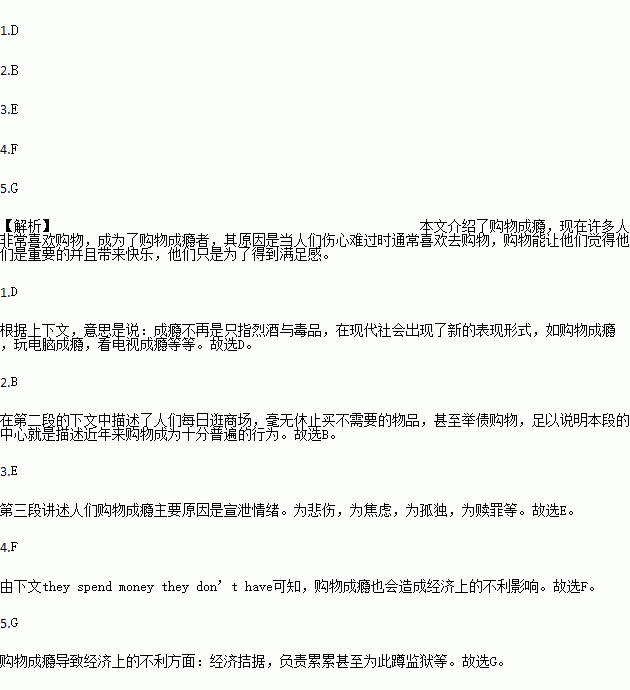题目内容
The word “addiction” usually makes you think of alcohol or drugs.?1.Some people are compulsive (难以自制的) shoppers. Others find it impossible to pull themselves away from their work. Still others spend countless hours watching TV or playing computer games.
2.Many people enjoy going to malls or stores more and more every day, but it’s more than a common hobby for some of them. They have turned into shopaholics(购物狂). They are people who simply enjoy shopping and walking around spending money without being able to stop doing it. They are hooked(吸引) on shopping and usually buy things that they don’t need. Even though they don’t have enough money, they buy everything they want.
3.There isn't a specific answer. Some people go shopping when they are sad, worried, upset or lonely and they want to feel better. They use this activity as a way to forget their problems. Shopaholics say that they feel more important and better after they buy something.4..
Shopaholism seems to be a harmless addiction, but it can bring out problems. Some of them can be psychological. If this is the case, people addicted to shopping should go to a support group to help them break this habit. However, the process, like for most addictions, is long, and they suffer a lot.5. They just think about satisfying their feelings, so they spend money they don’t have. They get deep in debt, and they can even go bankrupt(破产的) and get sent to prison.
A.Once you are addicted to alcohol or drugs, it is difficult to get rid of.
B. Over the years, shopping has become a very common activity.
C. People addicted to computer games consider the games as great ways to amuse themselves.
D. However, in modern society we are seeing some new kinds of addictions.
E. The question is, why do they have this addiction?
F. They also tend to have this addiction when they feel guilty.
G. It can also cause financial problems


 population in the US
population in the US